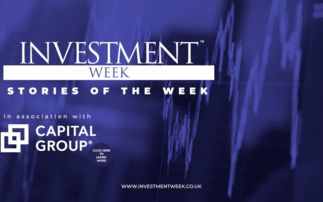First, to understand how significant changes have been, we can look at the two largest sectors in the credit universe, floating-rate loans and high-yield bonds. Both sectors experienced sharp declines when global fears intensified in March 2020: The S&P/LSTA Leveraged Loan Index fell by 12.37% in the month, while the ICE BofA Global High Yield Index declined by 12.68%.
Policymakers were quick to act as economic conditions worsened. The U.S. Federal Reserve (Fed), the European Central Bank and the Bank of Japan took unprecedented steps to ease monetary policy, which boosted confidence and caused markets to rally.
Sticking with the examples of the S&P/LSTA Leveraged Loan Index and the ICE BofA Global High Yield Index, we can see that the bounce for both loans and global high yield brought the sectors back into positive territory, with returns of 3.12% and 6.60%, respectively, for 2020 as a whole.
With vaccine rollouts ramping up, it appears that there is light at the end of the tunnel. In this paper, we examine the lie of the land in credit markets today to spell out where we see opportunity.
The new credit landscape
When considering the profound change that credit markets have witnessed over the past 12 months, key questions remain. Specifically, what will the lasting impact be and how will the new credit market landscape shape investing into the future?
Given the breadth and depth of the investment universe covered by the Eaton Vance Multi Asset Credit (MAC) team, we believe we are in a position to answer these questions. Here, comparing and contrasting our proprietary skew analysis over the nearly one-year period (March 31, 2020 to February 28, 2021) can yield valuable insights.
For background, skew analysis combines our long-term forward-looking views with shorter-term assessments to determine asymmetric risk/return profiles across credit sectors. The matrices in Exhibit A show our approach. On the x-axis sits our five-year forward-looking assessment for risk-adjusted returns. On the y-axis is our one-year skew analysis, which assesses how likely these same assets are to generate excess returns over that shorter time frame. We seek to identify markets that plot further right on the x-axis and higher up on the y-axis.
Sources: ICE Data Indices, LLC, S&P/LCD, JPMorgan as of February 28, 2021. U.S. High Yield represented by ICE BofA US High Yield Index. Euro High Yield represented by ICE BofA Euro High Yield Index. GBP High Yield represented by ICE BofA Sterling High Yield Index. US Loans represented by S&P/LSTA Leveraged Loan Index. Euro Loans represented by S&P European Leveraged Loan Index. EM IG Corp and EM HY Corp represented by ICE BofA Emerging Markets Corporate Plus Index. EM IG Sov and EM HY Sov represented by ICE BofA Emerging Markets External Sovereign Index. CLOs represented by J.P. Morgan Collateralized Loan Obligation Index (CLOIE) Post Crisis.
The pandemic's impact on the risk/return picture for credit assets is shown in the snapshot from March 31, 2020 in the left-hand chart in Exhibit A. Price dislocations opened up value across the credit market.The skew analysis showed an outlook for positive risk-adjusted excess returns across credit assets on both the shorter- and longer-term time horizons (i.e., broad-based allocations to credit markets) were likely to make money.
Source of all data: Eaton Vance, as at March 26, 2021, unless otherwise specified.
Risks and important information
This material is for Professional Clients/Accredited Investors only. Credit ratings measure the quality of a bond based on the issuer's creditworthiness, with ratings ranging from AAA, being the highest, to D, being the lowest based on S&P's measures. Ratings of BBB- or higher by Standard and Poor's or Fitch (Baa3 or higher by Moody's) are considered to be investment-grade quality. Credit ratings are based largely on the ratings agency's analysis at the time of rating. The rating assigned to any particular security is not necessarily a reflection of the issuer's current financial condition and does not necessarily reflect its assessment of the volatility of a security's market value or of the liquidity of an investment in the security. If securities are rated differently by the ratings agencies, the lower rating is applied. Holdings designated as "Not Rated" are not rated by the national ratings agencies stated above. Ratings are based on Moody's, S&P or Fitch, as applicable. Ratings, which are subject to change, apply to the creditworthiness of the issuers of the underlying securities and not to the strategy or composite.
Sources of data: Eaton Vance. In the EU this material is issued by Eaton Vance Global Advisors Ltd ("EVGA") which is registered in the Republic of Ireland with Registered Office at 70 Sir John Rogerson's Quay, Dublin 2, Ireland. EVGA is regulated by the Central Bank of Ireland with Company Number: 224763. Outside of the EU and US, this material is issued by Eaton Vance Management (International) Limited ("EVMI") 125 Old Broad Street, London, EC2N 1AR, UK, and is which is authorised and regulated in the United Kingdom by the Financial Conduct Authority.
Investing entails risks and there can be no assurance that Eaton Vance, or its affiliates, will achieve profits or avoid incurring losses. It is not possible to invest directly in an index. Past performance is not a reliable indicator of future results.












